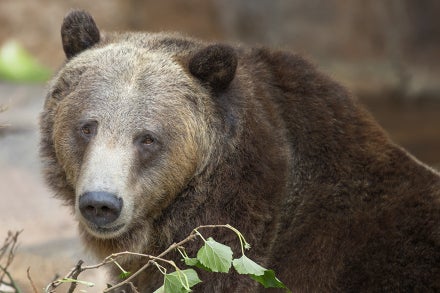SAN DIEGO (Sept. 17, 2024) – San Diego Zoo Wildlife Alliance’s veterinarians successfully performed the first-ever cesarean section (C-section) birth for a North American porcupine, marking a pioneering achievement in veterinary science. This procedure was instrumental in saving both the mother, Maizey, and her male porcupette (baby porcupine), illustrating the essential contributions of veterinary teams to wildlife conservation and their commitment to safeguarding animal health and vitality.
“This landmark procedure highlights the critical role that our veterinary teams play in species conservation, not just in emergencies, but as part of a legacy of leadership in wildlife care,” said Greg Vicino, vice president of wildlife care with San Diego Zoo Wildlife Alliance. “The success of Maizey’s C-section is another example of our veterinarians’ unwavering commitment to preserving the health and longevity of wildlife.”
The Denny Sanford Wildlife Explorers Basecamp wildlife care specialists meticulously prepared for Maizey's pregnancy, working closely with her and allowing for voluntary radiographs and veterinary examinations. When Maizey went into labor, wildlife care specialists provided around-the-clock monitoring and consulting with the veterinary team. Once it became evident that Maizey required further assistance with her pregnancy, the team decided to proceed with a C-section. Due to the complex medical procedure, the wildlife care specialists decided to hand-rear the youngster. This decision also allowed Maizey time to properly heal from the operation.
“This groundbreaking surgery emphasizes the integral role of expert veterinary medical care in zoological facilities and highlights the advantages of innovative approaches to save species in need of conservation,” said Dr. Michele Goodman, director of animal care with Elmwood Park Zoo and veterinary advisor for the North American porcupine Species Survival Plan (SSP). “For the North American porcupine, this procedure represents a significant step forward to improve long-term survival rates and contributes to broader conservation efforts aimed at securing its future in the wild.”
Multiple teams across the organization—from the Wildlife Explorers Basecamp wildlife care specialists with their extensive expertise in natural history and husbandry of Maizey, to the veterinary technicians and hospital care specialists who kept Maizey and baby safe during their surgery, to the neonatal assisted care unit specialists who attended to the porcupette in the critical period after birth—were fundamental to the success and well-being of both individuals.
“It can take a village to raise a child, and sometimes this is true even if they have quills,” said Dr. Garrett Fraess, clinical veterinarian with San Diego Zoo Wildlife Alliance. “Seeing both Maizey and her baby healthy and thriving is a testament to the exceptional care and teamwork at San Diego Zoo Wildlife Alliance.”
Today both Maizey and her porcupette are doing well. Maizey is back to her normal self, nicely healed from the C-section. Her easygoing nature makes her an excellent wildlife ambassador, having educated guests for many years. The porcupette is also healthy and getting bigger every day. He is very playful, often spinning quickly in circles and flaring up his quills, which simultaneously serves as practice for defending against predators.
Wildlife ambassadors such as Maizey play an important role by connecting guests with wildlife, showcasing natural behaviors and adaptations up close and personal. Maizey also helps guests understand the ecological role wild porcupines play and inspires people of all ages to appreciate the wonder of nature.
###
About San Diego Zoo Wildlife Alliance San Diego Zoo Wildlife Alliance, a nonprofit conservation leader, inspires passion for nature and collaboration for a healthier world. The Alliance supports innovative conservation science through global partnerships. Through wildlife care, science expertise and collaboration, more than 44 endangered species have been reintroduced to native habitats. Annually, the Alliance reaches over 1 billion people, in person at the San Diego Zoo and San Diego Zoo Safari Park, and virtually in 150 countries through media channels, including San Diego Zoo Wildlife Explorers television programming in children’s hospitals in 14 countries. Wildlife Allies—members, donors and guests—make success possible.



